Ninth Week in Phnom Penh + Hong Kong
Second to last week! Work is reaching its zenith, with deadlines looming and pressure building. Meanwhile, I am also trying my best to enjoy my few remaining days in Phnom Penh, which I now consider a second home of sorts.
This week I finished up my legal aid page for ODC, of which I am very proud. I feel like this project was incredibly worthwhile and that I learned a tremendous amount about Cambodia’s legal system and how inaccessible it can be to the average person. To put the issue in perspective, Cambodia has a total population approaching sixteen million people. Currently, there are about 1200 lawyers registered with Cambodia’s Bar association (and a lawyer must be a member of the Bar in order to legally practice law). Of those lawyers, about 200 are volunteers with the Bar’s Legal Aid Department. As such, there simply are not enough attorneys – by a long shot – to support Cambodia’s nationwide population.
Individuals in rural areas face additional difficulties accessing legal aid. Since there are no provincial bar associations, 90% of attorneys practice in Cambodia’s capital, Phnom Penh. As a result, most provinces only have a handful of working attorneys, and that’s a generous estimate. Considering about 80% of Cambodia’s population lives outside of Phnom Penh, the number of attorneys available to the average rural Cambodian is very, very low.
However, while the situation feels dire, there are several very hardworking legal aid NGOs that are doing great work. In particular, Legal Aid Cambodia and International Bridges to Justice spring to mind. Additionally, there are now several public interest law firms in Phnom Penh. As such, there are some resources available (assuming people are aware them). Hopefully these organizations will also receive more funding as a result of the Ministry of Justice drafting an official legal aid policy, which is due this year. Thus, I think steps are being made in the right direction, if slowly.
Hopefully, my efforts on ODC’s legal aid topic page will help Cambodians better understand how they can access legal aid, either from the Bar Association or from NGOs. While most of my project is an explication on how legal aid fits within Cambodia’s overarching legal system, I did my best to also catalogue currently accessible resources. Unfortunately, several of the more prominent legal aid NGOs have disappeared in recent years. Additionally, with the upcoming political election, many NGOs have seemingly bunkered down until further notice. As such, I am sure my catalogue will need to be revisited and edited periodically to ensure to it remains accurate and helpful.
In addition to my legal aid page, I am also wrapping up my review paper on NGO data packaging. ODC has been approached by commercial entities would like to buy data and resources specially packaged for their commercial needs. As an open data initiative, of course all of ODC’s data would still remain available for free public use on our website. However, also selling that data, organized in a particular way for a particular business, could generate a lot of income for ODC which, in turn, could be put to good use.
My review on the topic has included looking into Cambodia’s laws governing NGOs, abbreviated LANGO, to assess tax exemptions and other clauses regarding income-generating activities. More importantly, however, I have been researching Cambodia’s copyright laws and the commercial use of open data. Unsurprisingly, everything comes to down to licensing agreements; if a content creator provided ODC a parcel of open data but attached a license prohibiting commercial use, then ODC could not package that data for sale. Since it is fairly common for open data contributors to require non-commercial use in their terms of use, there may actually be little third-party data available for packaging.
Regardless, researching and writing about Cambodian copyright law and international licensing has been fun. I have learned some really interesting tidbits of information too. For example, copyright infringement can actually be criminally prosecuted in Cambodia, resulting in up to a whole year of imprisonment. However, that rarely happens. The Department of Intellectual Property Rights (DIPR) offers administrative proceedings outside the formal judicial process for intellectual property disputes. While the DIPR has no binding power, it seems to be very effective and well respected.
This past weekend, I went to Hong Kong, which was lovely. I traveled alone, making the experience more surreal than expected. The city is this massive, brightly-lit, futuristic place. In a lot of ways, traveling alone around the maze of steep roads, glitzy shopping malls, and hazy, neon lights in the drizzling rain was a very contemplative experience. I feel like I learned quite a bit about myself as a traveler.
The entire weekend, except for Monday, it rained constantly in Hong Kong. While a little inconvenient, I actually came to really appreciate the rain. The streets were beautiful, the colorful, flashing neon lights and electronic billboards reflecting off the wet pavement. I enjoyed traipsing around central Hong Kong, Kowloon, and Tsim Sha Tsui in the rain, my umbrella always in hand as I enjoyed the city in silence.
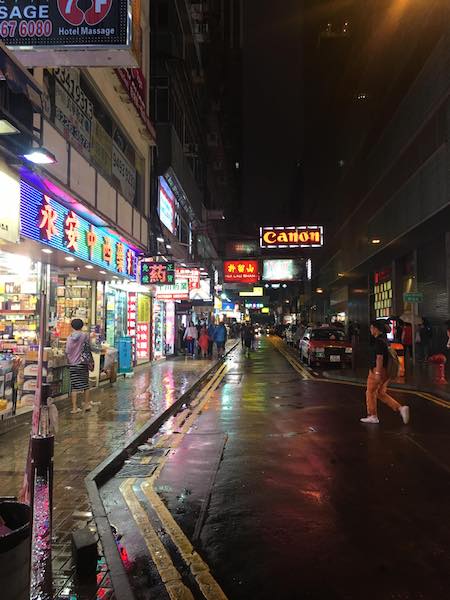
I also went to several rooftop bars so I could see the famous Hong Kong skyline. Unfortunately, because of the rain, most rooftop terraces were closed; further, visibility was pretty low. However, there was something still stunning about Hong Kong wrapped in misty clouds, the city a peaceful grey. At night, the skyscraper’s lights radiated into the rain, giving my photos a futuristic, dreamlike glow.
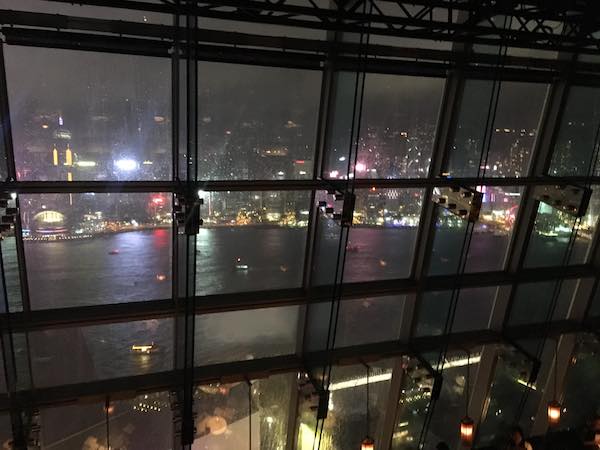
Speaking of futuristic, I stayed in a capsule hotel. The entire “hotel” was one tiny room, featuring eight beds. Each bed was an embedded bunk, with sleek, sound-muffling padding that magnetically peeled away from the bed. The capsule hotel looked and felt like it was designed by someone that had watched way too much modern, indie sci-fi movies. As such, the hotel was automated (fully operational without staff – save for cleaning), designed with utmost sleek minimalism. For example, my “key” to the room was a QR code. Overall, I was very impressed with my memorable accommodations, despite the tiny hotel being starkly quiet and unsocial.
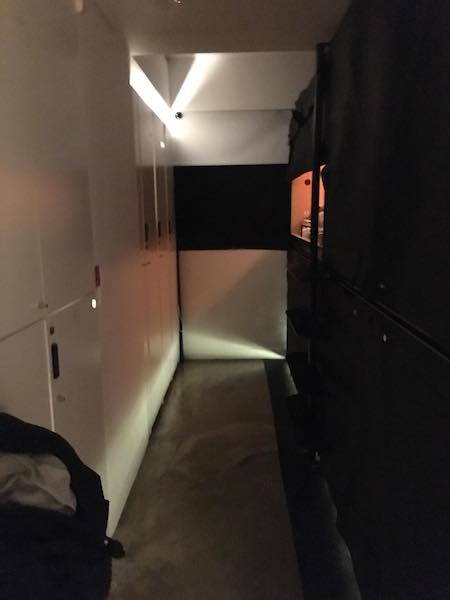
On Sunday, I climbed Victoria Peak – in the rain of course. While one can take a cab or tram to the summit, I decided to hike the whole way. The mountain is terribly steep, the trails rapidly ascending to altitudes well above the tops of skyscrapers. Indeed, my legs were rather unprepared for Victoria Peak. However, I was very proud of myself once I made it, and the misty views were breathtaking. Later, I climbed back down the mountain and wandered mainland Hong Kong for the rest of the day, visiting a night market later in the evening, as well as a gargantuan four-story shopping mall.
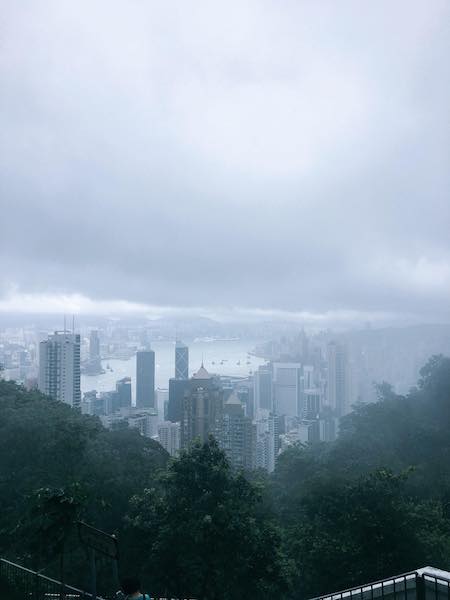
On Monday, I went to Hong Kong Disneyland, which was amazing and hilarious. Much smaller than Disneyworld or any other theme park I have visited, HK Disney can probably be done in a single half-day. Most of the rides are recycles of Disneyland favorites, like Space Mountain or the Jungle Cruise. However, they do have one novel ride, Mystic Manor, which was really imaginative and unique.
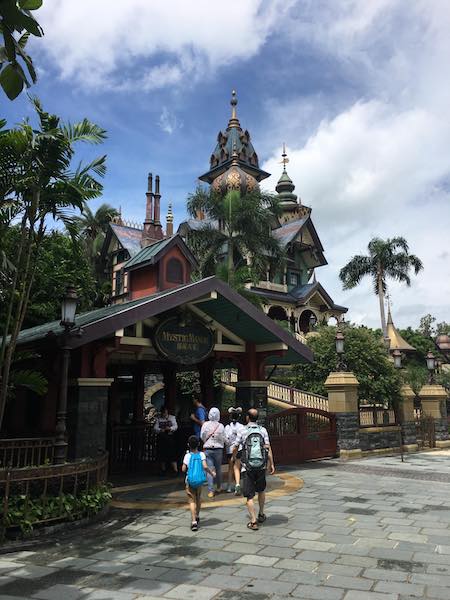
Unfortunately, Mystic Manor, while easily the best ride in the park, was borderline ignored by most Chinese visitors. Instead, everyone flocked to the Iron Man Experience, which is basically like Star Tours from Disneyworld in the US. I have never, in my whole life, seen people enjoy something as much as everyone enjoyed that Iron Man ride. People were clapping, screaming, oohing and aahhing the entire ride; you could barely hear the actual ride! The fun was definitely infectious.
The most interesting part of Hong Kong Disneyland was the multicultural aspect. While I saw very few western visitors, the park still gets a fair number. Additionally, the park receives many mainland Chinese visitors and Hong Kong residents. As such, Hong Kong Disneyland really has to juggle supporting its Mandarin, Cantonese, and English-speaking guests. This was especially interesting with respect to stage shows. Often times, one person in each show would speak one of the three main languages. For example, I wandered past a Moana show and stopped to watch. Moana herself spoke English, another main character spoke Cantonese, and I think everyone else spoke Mandarin.
As such, no matter what language you spoke, everyone could follow the plot and songs. I found it to be very well done and seamless. Similar methodologies were employed by other shows and rides. For example, in the Star Wars lightsaber show I watched, Rey spoke Cantonese while Kylo Ren spoke English. On the Iron Man ride, Robert Downy Jr. spoke English, while most of the ride’s dialogue, spoken by an AI pilot (assumedly Jarvis from the movies), was in Cantonese. I really enjoyed this aspect of Hong Kong Disneyland and found it more fascinating than anything else at the park.
Hong Kong was lovely, but I am pretty exhausted and traveled-weary after nine weeks abroad. I am happy to have another quiet, productive weekend. I am also excited to wrap up these ODC projects and see my efforts come to fruition. Until next week – for my very last blog post!